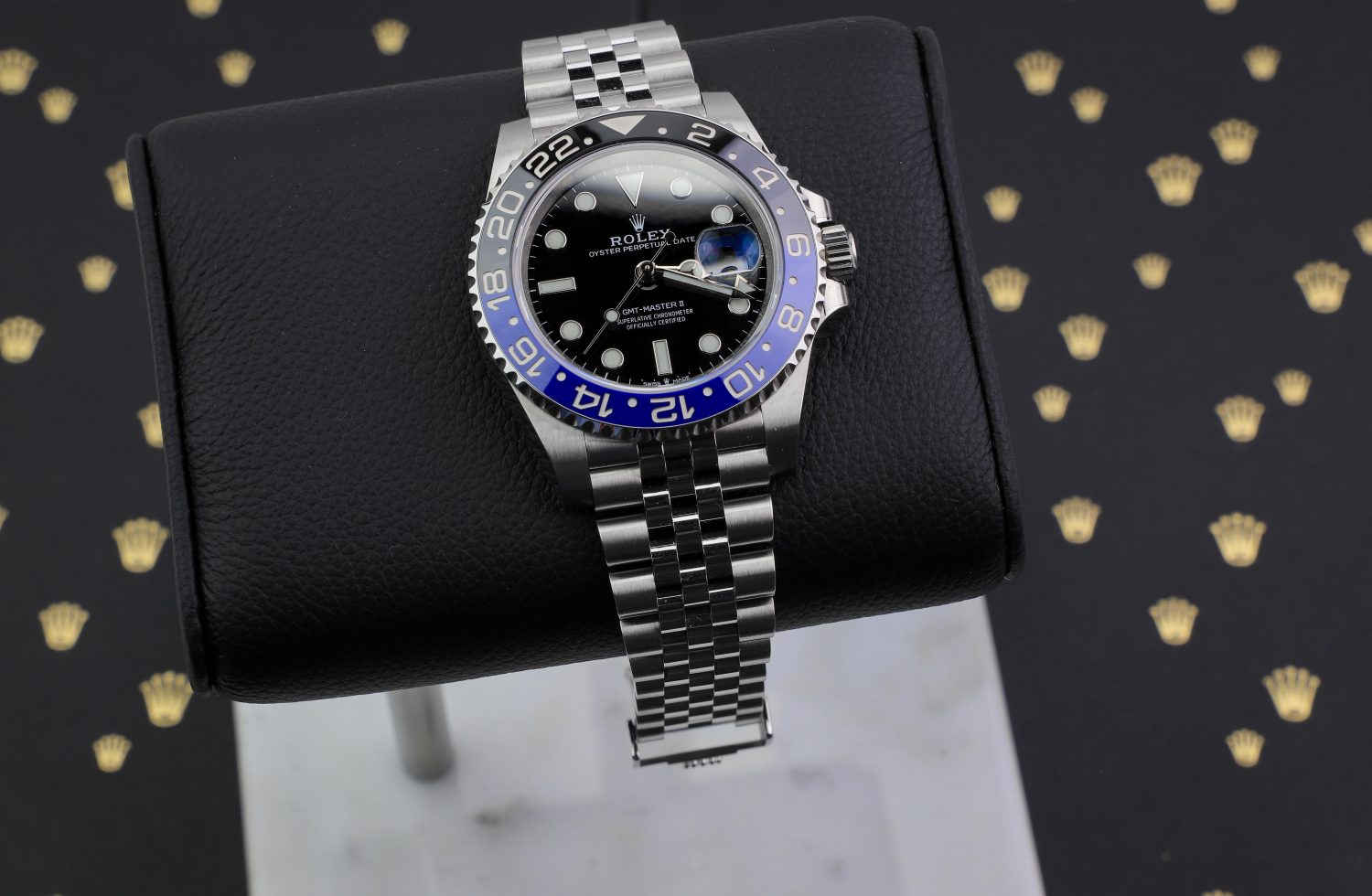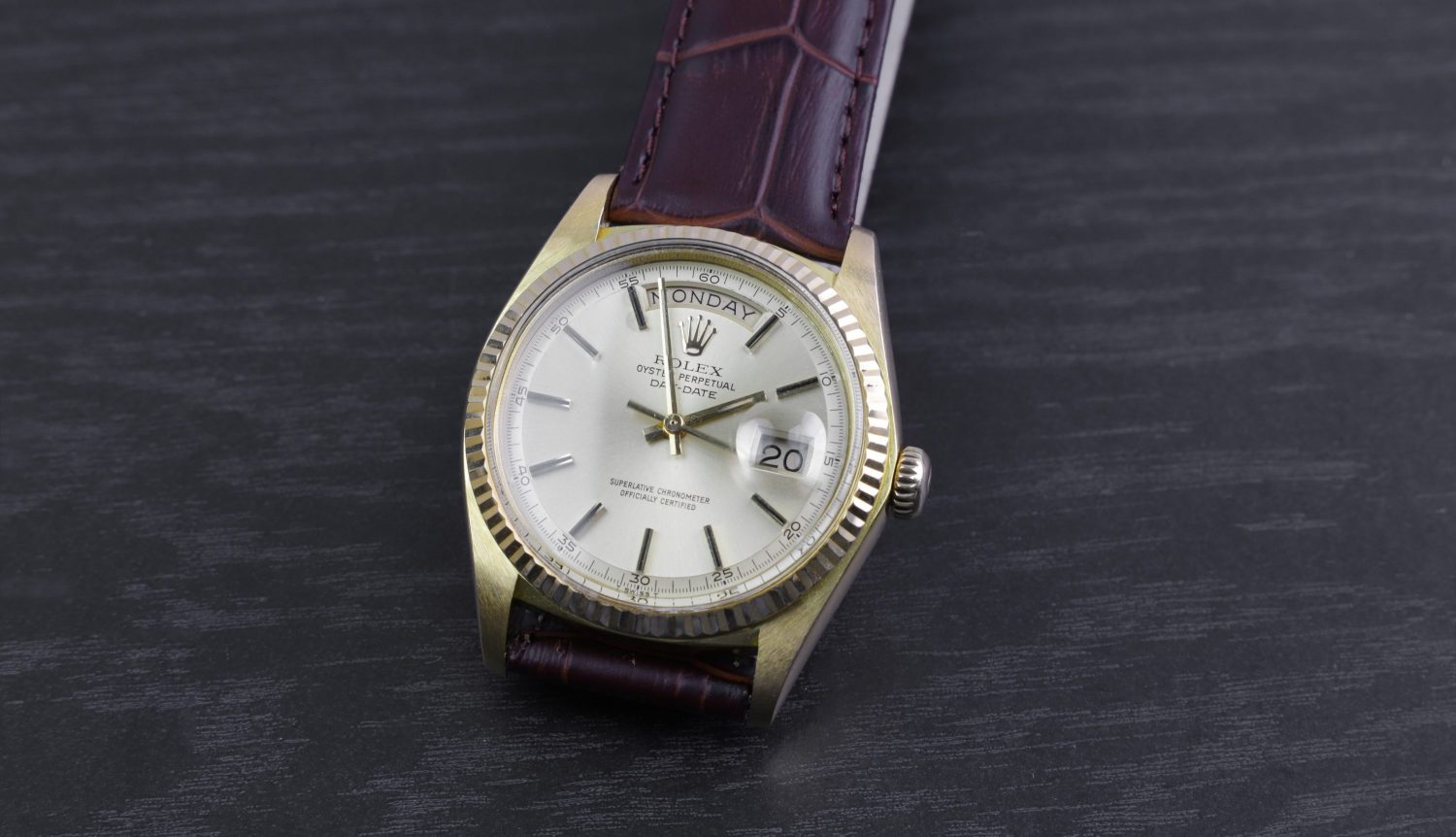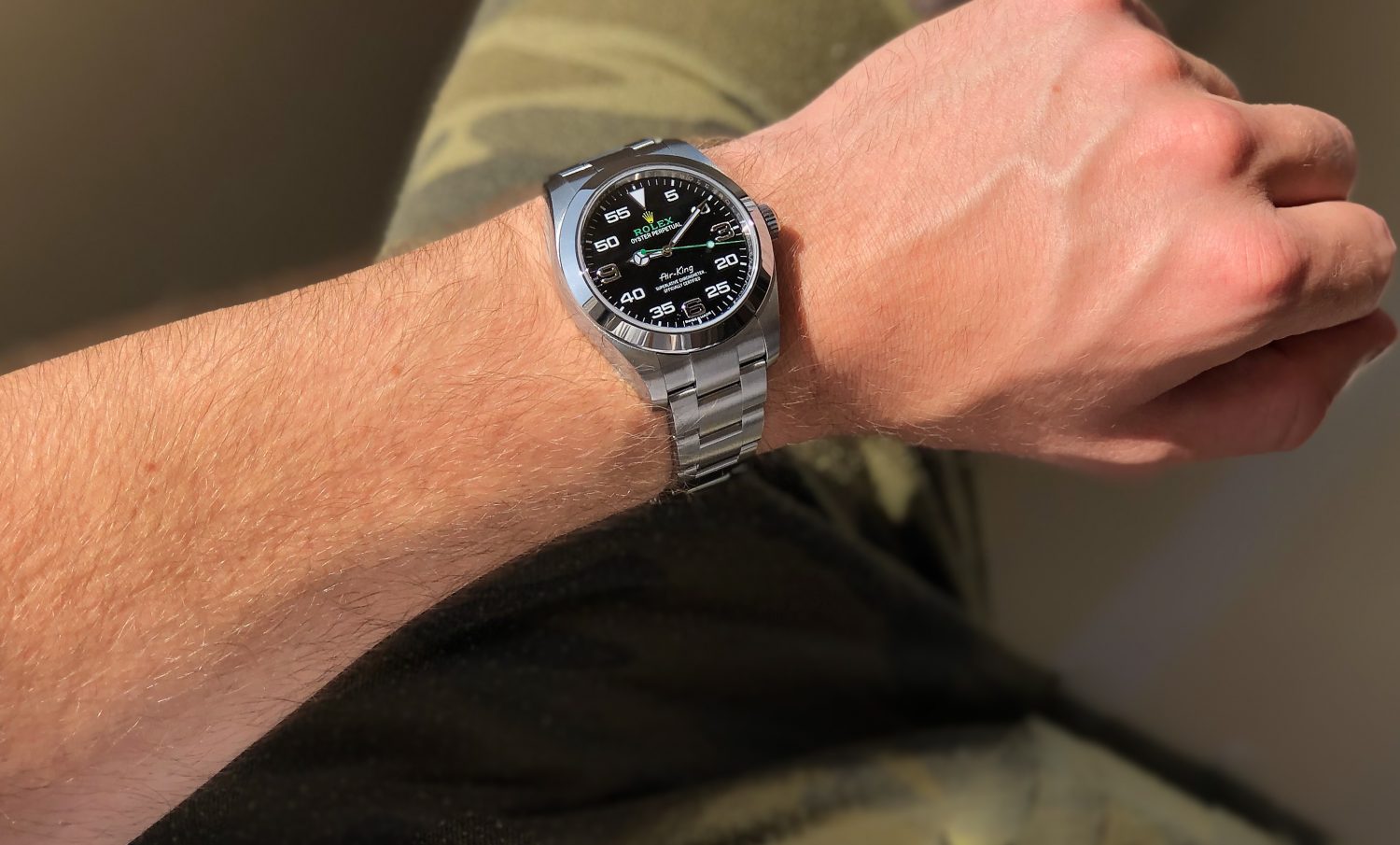
Rolex models – Rolex Model Collection Guide
All model lines by Rolex – How many Rolex collections are there?
There is a Rolex for everyone. As large as the company is, it has a watch for everyone. Furthermore, having been in business for more than 100 years, also means that there are many vintage watches that may not be in production anymore, to choose from.
Rolex has a number of collections and model lines in its lineup of watches. Most of the collections are many decades old, but the watches that are part of them are consistently refined and improved, with old ones being discontinued. Generally, each collection consists of a large array of timepieces that vary in size, dial color, bracelet option, metal, and decoration such as gemstone and bezel type. This is to ensure that there is a Rolex watch that appeals to every wrist and taste. Other collections, however, may only have a few models in them.
At the same time, there are also a few collections from Rolex that have been discontinued altogether over the course of the brand’s history.
In this article, we will look closer at which Rolex collections currently exist, but also the Rolex collections and model lines that have been discontinued. Furthermore, looking back at Rolex’s history even further, the company didn’t really have collections and model lines as well-structured and clearly defines as today. More so, the company released one watch, and then a new one. Some are based on the previous, others not.
Rolex models collections
Rolex Yacht-Master
The Yacht-Master was first introduced in 1992. This model line is meant as a more exclusive and elegant version of the Submariner. For yachters, as the name suggests. Throughout the years, it has been made in a number of different sizes – both men and women – as well as a number of different designs, metal, and dial combinations.
The watch has a water resistance of 1000 meters so is not a watch made for serious diving. Think of the Yacht-Master as a watch that you wear in the sun on a yacht in Monaco. At least, this was perhaps the clientele that Rolex targeted the Yacht-Master for when it was released.
Yacht-Master II
The Yacht-Master II was released in 2007 and is thus a very recent collection in Rolex language. As the name suggests, it is a revamped version of the Yacht-Master. The difference, however, is that this watch has advanced functions, specially developed for yacht racing.
In Rolex’s own words ”The only chronograph in the world with a mechanical memory, the Yacht-Master II with its bezel acting as a programmable countdown, is an essential tool for skippers to gauge their best course of action.”
”Rolex achieved perfection when it turned its attention to redefining the purpose and functionality of the bezel. Typically, a bezel operates independently from the internal mechanism; however, the Ring Command bezel in the Yacht-Master II regatta chronograph operates in conjunction with it. As a mechanical component linked to the movement, the bezel literally acts as the key to the programmable countdown, allowing it to be set and synchronized to the sequence of race start times.”
Rolex Submariner
The Submariner Date is one of the most iconic model lines from Rolex. The Submariner is also one of the most recognizable watches in the world in terms of design, and it has set the design standard for what we think a dive watch should be.
The Submariner is available both with and without a date. As the date function in wristwatches wasn’t released when the first Submariner was introduced in 1953, it didn’t feature a date function. The Submariner was in many ways revolutionary when it was released. Most importantly due to the fact that it was the first Rolex watch that was waterproof to 200m. Rolex has since improved its case structure and case sealing, which has enabled the watch to offer a water resistance of 200 meters.
The most distinct design element of the Submariner is its rotating bezel which is there to help divers keep track of elapsed time underwater, and thus how much oxygen is left in the tank. Throughout the years, Rolex has released a number of iterations of the Submariner. Each new generation focused on improving reliability, durability, and accuracy.
Sea-Dweller
The Sea-Dweller is essentially a more serious version of the Submariner. Made for even harsher conditions and even deeper dives. The Sea-Dweller was first released in 1978 and was in production up until 2008. It was then replaced by the Sea-Dweller 4000. In 2017, Rolex released an updated version of the model with the release of the reference 126600.
Originally, the Sea-Dweller and the Submariner were very similar in design. They essentially shared the same case and same design, but the major difference was that the Sea-Dweller had a helium escape valve to allow for even greater resistance to water at deep dives.
With the introduction of the new Sea-Dweller, Rolex made it and the Submariner different enough to be able to stand side-by-side in the model lines, and complement each other. The Sea-Dweller today has a 43mm case whereas the Submariner has a 40mm case. Perfect for those who think the Submariner is a tad too small.
Deepsea Sea-Dweller
The most serious dive watch from Rolex is the Deepsea Sea-Dweller.
The Deepsea Sea-Dweller (often referred to as DSSD) is also a relatively modern model from Rolex, released in 2007. If the Sea-Dweller is a Submariner with muscles, the DSSD is a Submariner on steroids. It has a 44mm case and a hefty thickness of a whopping 28.5 mm. It has a great wrist presence and a serious heft to it as it is made in solid stainless steel.
The Deepsea Sea-Dweller has a water resistance of 3900 meters.
Oyster Perpetual
The Oyster Perpetual is Rolex’s most classic and toned-down watch currently in Rolex’s collection as a watch that only displays the time. The Oyster Perpetual was released all the way back in 1956 and was a huge achievement for Rolex as it was the first-ever automatic waterproof wristwatch.
Today, the Oyster Perpetual model line consists of a large number of timepieces that vary in size and dial combination. It is exclusively made of stainless steel.
Explorer
The Explorer model was first released in 1954, and as the name suggests, it is a watch made for explorers. This means that it is a watch that is built to last, and handle harsh conditions. The popularity of the Explorer increased as it was worn by Edmund Hilary and Tenzing Norgay, the first men to reach the summit of Mt. Everest, who wore the watch on their expedition. This became a great testimonial to the watch’s durability and ability to handle extremely harsh conditions. The Explorer is still to this day part of Rolex’s collection, which of course now consists of a revamped and improved timepiece that incorporates new technology and improved build quality.
Explorer II
As the name reveals, the Explorer II is built on the Explorer, and with the same purpose in mind, of being a robust and durable timepiece for explorers.
Unlike the regular Explorer which displays time only, this watch is equipped with an additional hour hand and a 24-hour bezel. This enables the wearer to keep track of additional timezone. The watch was originally developed for cave explorers who sometimes struggled to differentiate between day and night.
The Explorer II was first launched in 1971 with the reference 1655.
Milgauss
The Milgauss is a rather underrated model from Rolex that perhaps hasn’t received the recognition that it may deserve. It was first released in 1956 and developed for scientists who worked in environments with high levels of magnetism. The issue with magnetism is that it has a negative effect on a watch movement’s accuracy. Rolex solved this issue by releasing the Milgauss which, as the name reveals, can resist the magnetism of up to 1000 gauss. The model is still in production today and has been improved and new and improved versions have been released throughout the years.
Cosmograph Daytona
Most often only known as the ”Daytona”, this is Rolex’s only chronograph timepiece. Prior to the Daytona, Rolex had released a few chronograph watches, but it wasn’t until 1963 that the chronograph with the Daytona name was released. As it was developed as a watch for race car drivers to time distances, its name refers to Daytona, Florida, where racing flourished in the early 20th century.
Today, the Daytona is probably Rolex’s most popular watch across all model lines, and it has received a legendary status amongst collectors. Not to mention the fact that the world’s most expensive wristwatch ever sold was a Daytona, which sold for a staggering 17.8 million USD.
GMT-Master and GMT-Master II
The GMT-Master was released in 1954 and became the first-ever wristwatch to keep track of multiple timezones simultaneously. Rolex developed the GMT-Master at the request of Panam, which needed a watch that the pilots could wear so they could keep track of both the local time and home time whilst flying.
The GMT-Master was discontinued in 1983 and replaced by the new GMT-Master II. The first watch to carry the GMT-Master II name was the reference 16760, also known as ‘The Fat Lady’. This watch featured improved technology that enables the wearer to read the time of three different timezones instead of two. The GMT-Master II also brings the benefit of being able to adjust the second hour hand independently.
The GMT-Master II is an extremely popular model from Rolex and its long and interesting history certainly contributes to its appeal amongst collectors.

Date
Also known as Oyster Date, this watch is very similar to the Oyster Perpetual but also has a date display. What is special about the Date is that it is only available in 34mm. The watch features an Oyster case and is waterproof up to 100 meters.
Day-Date
The Day-Date is a legendary watch from Rolex that was released in 1956 and was the first-ever watch to display both the day and the day at the same time.
It is also known as ”President” as several Presidents have worn this watch. Most notably President Dwight D. Eisenhower.
The Day-Date is exclusively made in precious metals and has a legendary status in Rolex’s collection today.

Datejust
The Datejust is a historically important model from Rolex. Released in 1945, it was the first wristwatch to display the date. Today, it is Rolex’s most popular model collection and is available in a huge array of sizes and designs. There really is a Datejust for everyone.
The Datejust was originally only available with a Jubilee bracelet but can now be bought on the Oyster bracelet as well. It is made in steel or gold and steel but never in full gold, although some full gold Datejust versions have existed in the past. An iconic element of the Datejust is its 18K gold fluted bezel, but the Datejust is also available with a smooth bezel for those who prefer a cleaner look. The date cyclops positioned above the date window at 3 o’clock makes this an instantly-recognizable model. The Datejust is available in sizes from 26mm to 41mm.
Lady Datejust
Technically part of the Datejust collection, but still referred to as a unique model. The Lady Datejust is a Datejust that is made in a smaller size to appeal to women. It is generally also decorated with diamonds and made of precious metals to make it more elegant and feminine.
Sky-Dweller
The Rolex Sky-Dweller was released in 2012 and is one of Rolex’s most advanced timepieces. The watch has a ring command bezel with which you can operate the watch. The model features an innovative annual calendar called Saros and a dual time zone display, making it the ideal watch for world travelers. ”The Saros annual calendar automatically differentiates between 30-day and 31-day months, and requires only one date adjustment a year, when the month changes from February – which has only 28 or 29 days – to March.”
In Rolex’s own terms ”The Sky-Dweller’s fluted, rotatable bezel is much more than an aesthetic feature. It allows the wearer to select the functions to be set – date, month, local time, or reference time – by simply turning the bezel. Its slightly larger and deeper fluting differs from the one manufactured for other Rolex watches, and offers an excellent grip when setting the Sky-Dweller.”

Cellini
The Cellini is the only model line from Rolex not to use the Oyster Case. It is Rolex’s most elegant collection consisting of dress watches. The Cellini collection pays tribute to the Italian goldsmith and sculptor, Benvenuto Cellini from the 16th century. Mr. Cellini was a famous goldsmith who did work for popes and kings.
The Cellini model was introduced in the early 1960s and still struggles somewhat to gain traction as Rolex is not the brand most people turn to when they want to get a luxury dress watch. Instead, most people probably think of the likes of Patek Philippe or Vacheron Constantin.
Dress watches are not what most people associate with Rolex, and therefore, the Cellini is Rolex’s least well-known and least recognizable collection. Rolex is mostly known for building highly reliable and robust tool watches, which means many people are unaware that this collection even exists.
Air-King
The Rolex Air-King was released in 1945, during World War II, and is still in production today. This is because the model line was revived in 2016 with the release of the new Air-King reference 116900.
The model was created to honor the RAF, British Royal Air Force pilots of the Battle of Britain. The Air-King has always been an affordable sports watch option compared to Rolex’s other sports watches. It is a time-only timepiece that has a very clean design similar to that of the Oyster Perpetual.
It is a time-only timepiece, originally made in 32 and 34mm. Today’s Air-King has a 39mm case.

Pearlmaster
The Rolex Pearlmaster was first introduced in 1992 and was an 18k yellow-gold version of the Lady-Datejust. The Pearlmaster is a Datejust at its core but is decorated with gemstones to enhance its exclusivity. Rolex calls it the Pearlmaster. The model name printed on the Dial is Datejust, but it has a number of changes from the standard Datejust, including a special Pearlmaster bracelet and a highly polished case. It is exclusively made of precious metal, considering its exclusive nature.
The Pearlmaster is bejeweled with diamonds, rubies, sapphires, or emeralds.
The Pearlmaster is primarily a women’s watch but can be seen worn both by men and women as it is made in sizes up to 39mm. The Pearlmaster is still in production but not very commonly seen due to the high price tag these bejeweled watches have.
The purpose of the Pearlmaster is to make it more exclusive and elegant than the Datejust.
Rolex discontinued collections/model lines
Lady Date
The Lady Date is no longer a part of Rolex’s model collection as the Datejust, with its large size range, fills that gap. The Lady Date is essentially a Datejust, but it was just that it was made back in the day. It has since been replaced with the Datejust and of course all of the technical improvements and design features that have come over the years,
Lady Oyster Perpetual
Technically, this model is no longer in production as, similar to the Lady Datejust, Rolex just calls it the Oyster Perpetual today.
The Lady oyster Perpetual is an Oyster Perpetual which means a time-only watch. It is called lady due to its case size of 26mm which is made for women.
Day-Date Oysterquartz
During the quartz crisis in the 1970s, Rolex developed a few quartz (battery-driven) watches. One of which is the Day-Date Oysterquartz. At its core, it is a Day-Date watch, but the major difference is that it is powered by a quartz movement. Furthermore, to give the quartz watches their own distinct look, all Oysterquartz Rolex watches have an integrated bracelet.
The Day-Date Oysterquartz was released in 1977. This model was available in two references – the 19018 in yellow gold and the 19019 in white gold. This model line was discontinued in 2001, and since then, Rolex has never looked back at quartz.
Datejust Oysterquartz
Rolex also made a Datejust quartz version called the Datejust Oysterquartz. This displays only the date. This too has an integrated bracelet design.
The Datejust Oysterquartz was released in 1977 and discontinued in 2001.
Datejust Turn-O-Graph
A variant of the Datejust which was established into its very own collection was the Datejust Turn-O-Graph, also known as the Thunderbird. This model is a Datejust, but with one major difference – it has a rotating bezel (hence the name turn-o-graph). The Datejust Turn-O-Graph was released by Rolex in 1953 and discontinued in the 1960s. However, after many years of rest, Rolex revived the turn-o-graph model in 1988. With the advent of Rolex’s new-generation Caliber 3135, Rolex released the new generation version, with 1626xx references This Turn-O-Graph features a bi-directional bezel to measure elapsed time, making it more functional than a regular Datejust.




